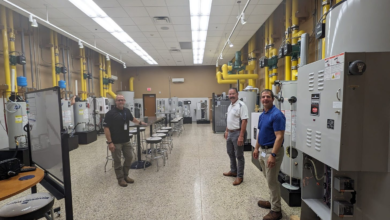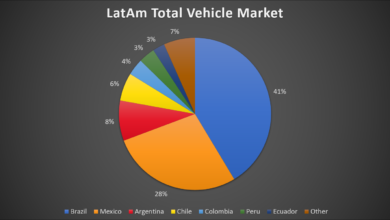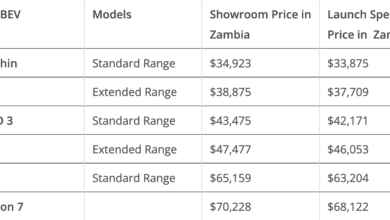Scientists Search The Underside Of Glaciers For Clues To Sea Level Rise

Sign up for daily news updates from CleanTechnica on email. Or follow us on Google News!
Knowledge about the underside of glaciers may enable scientists to predict how glaciers interact with warmer ocean waters. That information, in turn, will provide a better understanding of how much of an increase in sea levels we can expect and when, which will give world cities time to prepare for it.
Despite all our digitally enhancements and AI prowess, we know less about glaciers than we know about the back side of the moon. For decades, climate scientists have been suggesting that glaciers all around the world, from Antarctica to Greenland, are melting because of warmer air and water temperatures caused by human activity. That should come as no surprise.
In 2013, researchers at the University of New South Wales estimated that humans have added two trillion tons of carbon dioxide to the atmosphere by burning fossil fuels over the past 50 years. That in turn has led to adding the heat of more than 25 billion atomic bombs to the environment. Some of that heat has caused the atmosphere to get hotter, leading to more powerful storms with more rain, but some has also been absorbed by the oceans. When that warmer water interacts with glaciers, it causes them to melt faster, which contributes to rising sea levels.
It is estimated that if the glaciers covering Greenland were to melt entirely, that would raise sea level by 7 meters or 23 feet. If that happened, most world cities would disappear and a billion people would be displaced. Yet we know very little about how glaciers and oceans interact. The picture we have today is incomplete because we simply do not have the tools to investigate that interface with any degree of accuracy.
Researching Glaciers
A team of researchers from the University of Texas aboard the research vessel Celtic Explorer intends to fix that. Anchored near the Kangerlussuup glacier on the eastern side of the southern tip of Greenland, they are using a multi-million dollar robotic submarine that has taken a decade to develop to explore beneath the glacier. What they are most interested in is understanding what is happening at the edge of that glacier where it meets the sea. That edge acts like the blade of a gigantic bulldozer, pushing huge mounds of ground up rock ahead of it.
Those mounds could insulate the glaciers from warmer ocean water, which would slow the melting process. In effect they could function as “speed bumps” that slow down the impact of global heating. But researchers have never been able to examine the transit zone where glaciers, rocks, and oceans meet. The robotic submarine called Nereid Under Ice (NUI) is designed to take core samples of that mound about 50 meters (165 feet) from the edge of the glacier. The closest scientists have gotten previously is 500 meters (1650 feet).
On board the Celtic Explorer, Professor Ginny Catania, the expedition’s chief scientist watched the video monitor as it revealed a vast underwater cavern in the glacier. Engineer Victor Naklicki piloted the NUI with a modified video game controller through waters that are not only dark but turbid with sediment. His job requires intense concentration during the 10 hour dive. Afterwards, he told Damian Carrington of The Guardian, “It was pretty crazy down there. We saw the big cave and you could feel the [sub’s] thrusters working very hard to not get sucked right in. We made it 50 metres into it, but it went even deeper – it was an abyss. But there’s no better feedback than when the scientists are standing behind you and they’re like: ‘Oh my God. This is crazy. We never expected this. This changes everything’,” he said.
The data from NUI is critical to solving the mystery of how sediment banks may slow glacier break-up. “Model projections for the future of Greenland are just all over the place,” says Catania. “Very rapid sea level rise has been documented in the past and so: is it possible to get that again? We are certainly perturbing the climate system enough.”
John Jaeger, a professor at the University of Florida, leads the sediment experts onboard the ship. He told Carrington, “In Florida, we clearly see sea level rise already. Coastal cities there are already getting flooded out on high tides. A lot of the forecasting models are not taking into account what we’re looking at here, which is the speed bump to the ice retreating. If we begin to melt a lot of ice, and [a glacier] begins to move very quickly, it can actually create a lot of sediment, and maybe that is a feedback mechanism that will slow it down.”
Using Technology To Unlock The Secrets Of Glaciers
NUI is packed with instruments that scan the glacier face and sediment banks in high resolution, measuring the velocity, temperature and saltiness of the water and grabbing crucial samples. Its primary task is taking core samples of the sediments piling up right at the glacier’s edge. Jaeger, who was celebrating the 30th anniversary of his first Arctic expedition, said, “I could never get closer [to the glacier’s terminus] than about a kilometer because of safety reasons. That gap was always frustrating. Now NUI gives us the chance to get in there and collect these amazing datasets.”
At night, the glacier and fjord are probed in different ways. Sonar sees through the seafloor to the layers beneath, revealing how the sediment banks have been built in the past, and the best places to sample long cores. Then NUI drops a 6 meter (20 foot) long weighted tube straight down into the seabed like a torpedo. The silky clay-rich mud brought back enables the researchers to go back in time. “That’s probably about 20 years of sediment,” Jaeger says, examining faint annual layers in a 2-metre-long sample.
Catania said the high resolution data gathered by NUI is unique. “It was like putting glasses on for the first time, when you can suddenly see all the leaves in the trees. The detail is striking, like seabed channels that we’ve never seen before — that we didn’t know even existed. Now the fun starts, to try to interpret it all, understanding what it is that we’re even looking at. The observations are so novel that even the ways that we process the data have to be changed.” That will take time but the implications of the work could impact every country with a coastline. “I’m hoping it will make a big impact in terms of understanding,” she says.
“We know that in these systems, there are tipping points,” says Professor Sean Gulick, the expeditions’ co-chief scientist. “But if a glacier creates a large pile of sediment, it might delay some of the catastrophic retreat that people are most worried about. These glaciers in west Greenland are particularly important because they’re fed directly from the Greenland ice sheet. They are the front line of the battle between the [warming] ocean and the ice.” Other recent research has shown Greenland’s ice sheet vanished in the past when global temperatures were similar to those today.
Not all glaciers build giant sediment banks, but knowing whether this affects the biggest and most dangerous glaciers in Greenland and Antarctica will be critical information because sea level rise does not happen evenly around the world, Catania said, “So if we can say where this sedimentation process is more important, that might help us to understand what cities are going to be more at risk from the collapse of ice sheets. On the Texas coast, a lot of people live in houses on stilts because of hurricanes. If you’re building, you want to know, do you need to build it 4 meters high or 8 meters high?” Some might question whether building houses 25 feet in the air is a smart thing to do in any case.
The research could also contribute valuable insights into a geoengineering idea. “One proposal has been to try to shore up our glaciers and ice sheets against the impact of warming ocean water, by building barriers,” says Benjamin Keisling, an ice modeller at the University of Texas. “Of course, that represents a massive undertaking, logistically and financially, but the ocean is taking up more and more heat as the atmosphere warms. Building a barrier like that seems absurd, but then you realize that is actually something that nature does naturally.”
The sediment banks may prove to be a helpful delayer of sea level rise in places, giving communities a little more time to prepare. But substantial rises are already unavoidable, warns Catania. “We really need to plan for the inundation at the coastlines, because it’s coming. We don’t know when, and certainly we need to answer that question, but we have little planning at many coastlines, especially in the many countries that are not wealthy, that are going to get completely inundated.”
The Takeaway
We actually know very little about the planet we live on. We are discovering new ways of harnessing the power of the sun and tapping the heat stored deep in the Earth, both of which offer the hope of abundant clean energy in the not too distant future. But in the meantime, we silly humans continue to add heat equivalent to hundreds of thousands of atomic bombs to the environment every day and cling to our fossil fuels as if they are our only hope.
Perhaps we should recall the parable of the scorpion and the frog. In the end, our embrace of fossil fuels may simply doom us all before the transition to non-polluting sources of energy is completed. Knowledge may be power, but that is no guarantee it will arrive in time to stave off a disaster of our own making.
Have a tip for CleanTechnica? Want to advertise? Want to suggest a guest for our CleanTech Talk podcast? Contact us here.
Latest CleanTechnica.TV Videos
CleanTechnica uses affiliate links. See our policy here.
CleanTechnica’s Comment Policy






